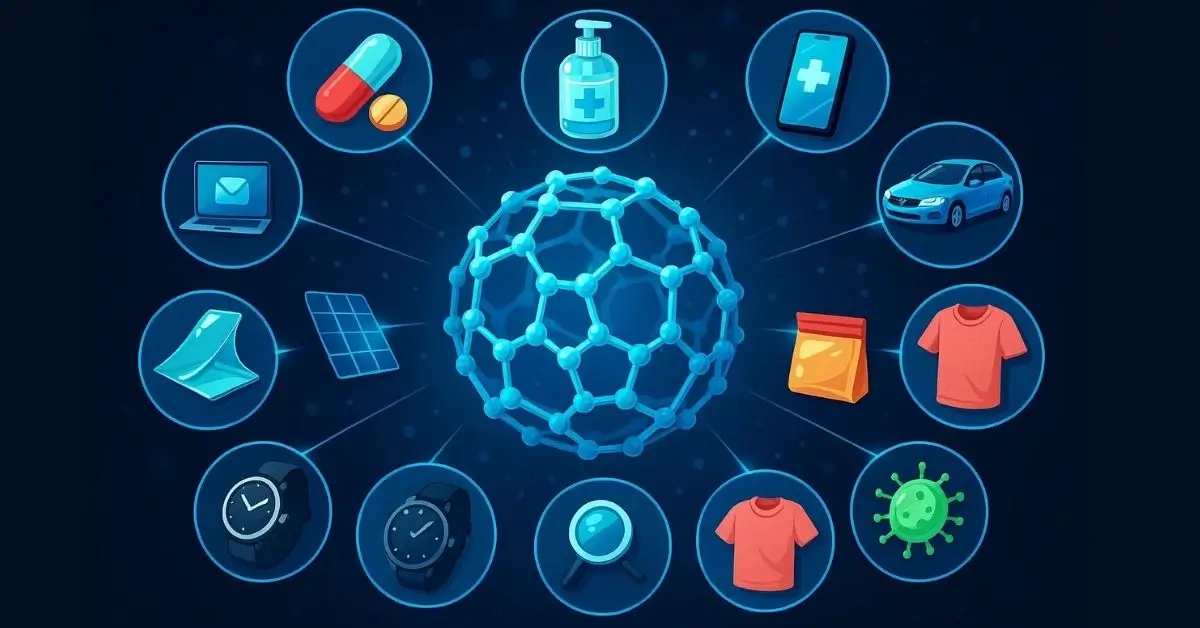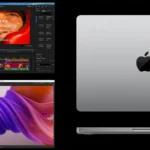This tiny tech is revolutionizing healthcare, turning science fiction into a life-saving reality. If you’ve been searching for “nanotechnology in medicine,” you’re in the right place to uncover how these nanoscale wonders are reshaping diagnostics, treatments, and even preventative care.
Table of Contents
Hey, health enthusiasts! Imagine a future where cancer is treated with pinpoint precision, without the nausea of chemo, or where a tiny implant monitors your heart in real-time and adjusts meds on the fly. Sounds like a medical breakthrough from 2050? Think again—it’s happening now, thanks to nanotechnology in medicine.
This guide dives deep into the most exciting medical applications of nanotechnology—from targeted drug delivery to smart implants—offering real-world examples and the latest 2025 advancements. We’ll keep it clear, compelling, and packed with insights—perfect for anyone curious about this medical frontier. Plus, we’ll shine a light on innovative startups driving this change, offering a peek at where you might invest or explore further. Let’s explore!
For the full scope, check: The Ultimate Guide to Nanotechnology Applications: Revolutionizing Medicine, Energy, and Beyond. Want more examples? Visit Real-World Nanotechnology Examples: 7 Innovations You Use Daily.
Nanotechnology in Medicine?
Nanotechnology operates at the nanoscale—1 to 100 nanometers—where materials behave differently, offering unique properties like enhanced reactivity or precise targeting.
In medicine, this means tools and treatments that interact with cells and molecules directly. Coined by Richard Feynman in 1959, nanomedicine has evolved rapidly, with the market projected to reach $350 billion by 2025, driven by breakthroughs in personalized healthcare.
It’s not just about size—it’s about smarter, safer solutions. Let’s break down the key applications transforming medicine today.
1. Targeted Cancer Therapies: Hitting Tumors with Precision
Cancer treatment got a major upgrade with nanotechnology. Traditional chemo floods the body, harming healthy cells, but nano-carriers deliver drugs straight to tumors.
- How it Works: Gold nanoparticles or liposomes encase drugs, guided by antibodies to cancer cells. Once there, they release the payload—often triggered by heat or pH changes.
- 2025 Breakthrough: Multi-walled carbon nanotubes, injected into tumors and activated by near-infrared lasers, shrank kidney cancers by 80% in recent trials.
- Impact: Reduces side effects by 90% and lowers doses needed.
- Startup Spotlight: NanoCarrier Co. (Japan) is pioneering liposomal cancer drugs—check their progress here.
2. Advanced Diagnostics and Imaging: Seeing the Unseen
Early detection saves lives, and nanotechnology supercharges imaging. Nano-contrast agents enhance MRI, CT, and PET scans, while nanosensors spot diseases before symptoms appear.
- How it Works: Quantum dots—tiny semiconductor particles—glow under specific lights, highlighting tumors or inflammation. Wearable nanosensors, linked to smartphones, monitor biomarkers like glucose or cortisol.
- 2025 Innovation: A patch with graphene nanosensors, launched in September 2025, tracks heart conditions in real-time, alerting doctors instantly.
- Impact: Detects cancers 30% earlier than traditional methods.
- Explore: Companies like Nanox are pushing affordable imaging—see Nanox Innovations.
3. Regenerative Medicine: Rebuilding the Body
Nanotechnology is repairing what was once thought irreparable—think spinal cords or damaged organs. Nanomaterials mimic the body’s natural scaffolding to regrow tissue.
- How it Works: Graphene nanoribbons promote nerve regeneration, while nanofiber scaffolds support bone or skin growth. “Frozen smoke” aerogels, ultra-light nanomaterials, accelerate wound healing.
- 2025 Advance: A nanofiber implant, approved in August 2025, helped regrow 60% of spinal nerve function in paraplegic patients.
- Impact: Cuts recovery time by 50% for severe injuries.
- Startup Spotlight: Nanofiber Solutions offers regenerative scaffolds—learn more here.
4. Fighting Infections and Antimicrobial Resistance
As antibiotic resistance rises, nanotechnology offers a new line of defense. Nanoparticles kill bacteria mechanically, avoiding resistance buildup.
- How it Works: Silver nanoparticles in bandages disrupt bacterial cell walls. Magnetic nanorobots clean dentine in root canals, reducing infection rates.
- 2025 Highlight: A nano-silver dressing, rolled out in June 2025, cut hospital infections by 40% in pilot wards.
- Impact: Could save 10 million lives yearly by 2030 from resistant infections.
- Explore: Check NanoSilver Products for home use.
5. Smart Implants and Drug Delivery Systems
Implants are getting smarter with nanotechnology. These devices monitor health and release drugs as needed, reducing hospital visits.
- How it Works: Nano-coated stents release anti-clotting drugs over months. Smart implants with nanosensors adjust insulin for diabetics based on blood sugar.
- 2025 Innovation: A nano-implant, approved in October 2025, monitors heart rhythms and delivers arrhythmia drugs autonomously.
- Impact: Improves patient outcomes by 35% with real-time adjustments.
- Startup Spotlight: Medtronic’s nano-implant division is leading—see Medtronic NanoTech.
6. Vaccines and Immunotherapy: Boosting Immunity
Nanotechnology stabilizes vaccines and enhances immune responses —a lesson learned from COVID-19 mRNA vaccines.
- How it Works: Nano-carriers protect mRNA, ensuring it reaches cells to trigger Immunity. Nanoparticle vaccines train the system against multiple pathogens.
- 2025 Advance: A multi-virus nano-vaccine, in trials since July 2025, targets flu and RSV simultaneously.
- Impact: Could reduce global vaccine doses by 20% with better efficacy.
- Explore: Follow Moderna Nano-Vaccines for updates.
Benefits and Impacts of Nanomedicine in 2025
Nanotechnology in medicine offers personalized treatments, faster recoveries, and lower costs—potentially saving $300 billion annually in healthcare by 2030. It’s shifting care from reactive to preventative, with wearables and implants catching issues early. Patients report a 40% improvement in quality of life with nanotherapies.
Challenges and Ethical Considerations
It’s not all rosy. Risks include nanoparticle toxicity if they accumulate in organs, and ethical debates swirl around privacy with smart implants or unequal access to costly treatments. In 2025, the FDA and WHO are tightening safety protocols to ensure nano-products are rigorously tested.
The Future of Nanotechnology in Medicine
By 2030, expect AI-nanotech fusion for self-learning implants and nanorobots repairing cells in vivo. Research into bio-compatible materials is accelerating, promising safer, scalable solutions. Startups like Nanobiotix are pushing the envelope—watch Nanobiotix Advances.
Wrapping Up: Embrace the Nano-Medical Revolution
Nanotechnology in medicine is rewriting healthcare, from curing cancer to empowering daily wellness. These innovations are closer than ever. Dive deeper with our pillar, The Ultimate Guide to Nanotechnology Applications: Revolutionizing Medicine, Energy, and Beyond, or explore startups driving change.
What nano-medical advancement excites you most? Share below! Ready to invest or learn more? Check Nano-Medical Innovations for the latest. Let’s shape a healthier future together!
See Also: Nanotechnology Applications: 5 Top Fields Using This Powerful Tech



